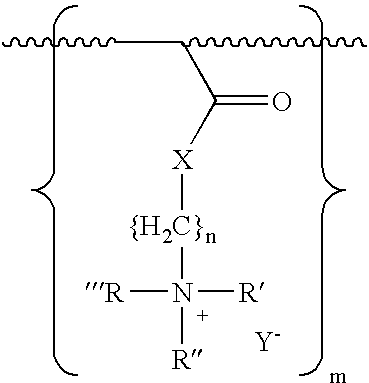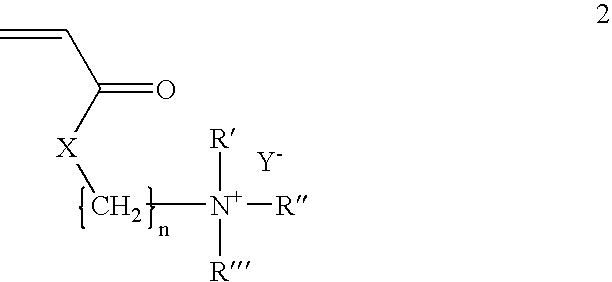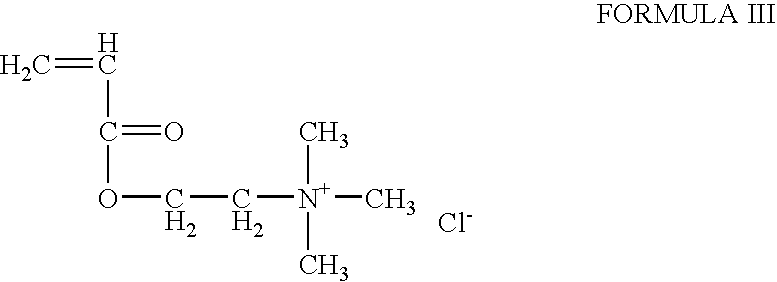Inherently antimicrobial quaternary amine hydrogel wound dressings
a polyacrylate, antimicrobial technology, applied in the direction of non-metal conductors, conductors, diagnostic recording/measuring, etc., can solve the problems of hydrogels that cannot be sterilized by irradiation, hydrogel exudate absorbed by hydrophilic polymers tends to harden or solidify the polymer, and the wound often weeps or exudes fluids, etc., to achieve excellent physical characteristics in adhesiveness, prevent discolor
- Summary
- Abstract
- Description
- Claims
- Application Information
AI Technical Summary
Benefits of technology
Problems solved by technology
Method used
Image
Examples
example 2
The resultant gel had a solids content of 61% by weight and is similar to Example 1, except that the saline solution was replaced by water. The polymerization process was the same as were the properties of the gel.
example 3
The procedure of Example 1 was followed and the resultant transparent gel had a light tack and a solids content of 70% by weight.
example 4
The resultant transparent gel had a light tack and a solids content of 70% by weight. This example is similar to Example 3 except that the saline solution was replaced by water. The polymerization process was the same.
PUM
| Property | Measurement | Unit |
|---|---|---|
| Percent by mass | aaaaa | aaaaa |
| Percent by mass | aaaaa | aaaaa |
| Percent by mass | aaaaa | aaaaa |
Abstract
Description
Claims
Application Information
 Login to View More
Login to View More - R&D
- Intellectual Property
- Life Sciences
- Materials
- Tech Scout
- Unparalleled Data Quality
- Higher Quality Content
- 60% Fewer Hallucinations
Browse by: Latest US Patents, China's latest patents, Technical Efficacy Thesaurus, Application Domain, Technology Topic, Popular Technical Reports.
© 2025 PatSnap. All rights reserved.Legal|Privacy policy|Modern Slavery Act Transparency Statement|Sitemap|About US| Contact US: help@patsnap.com



